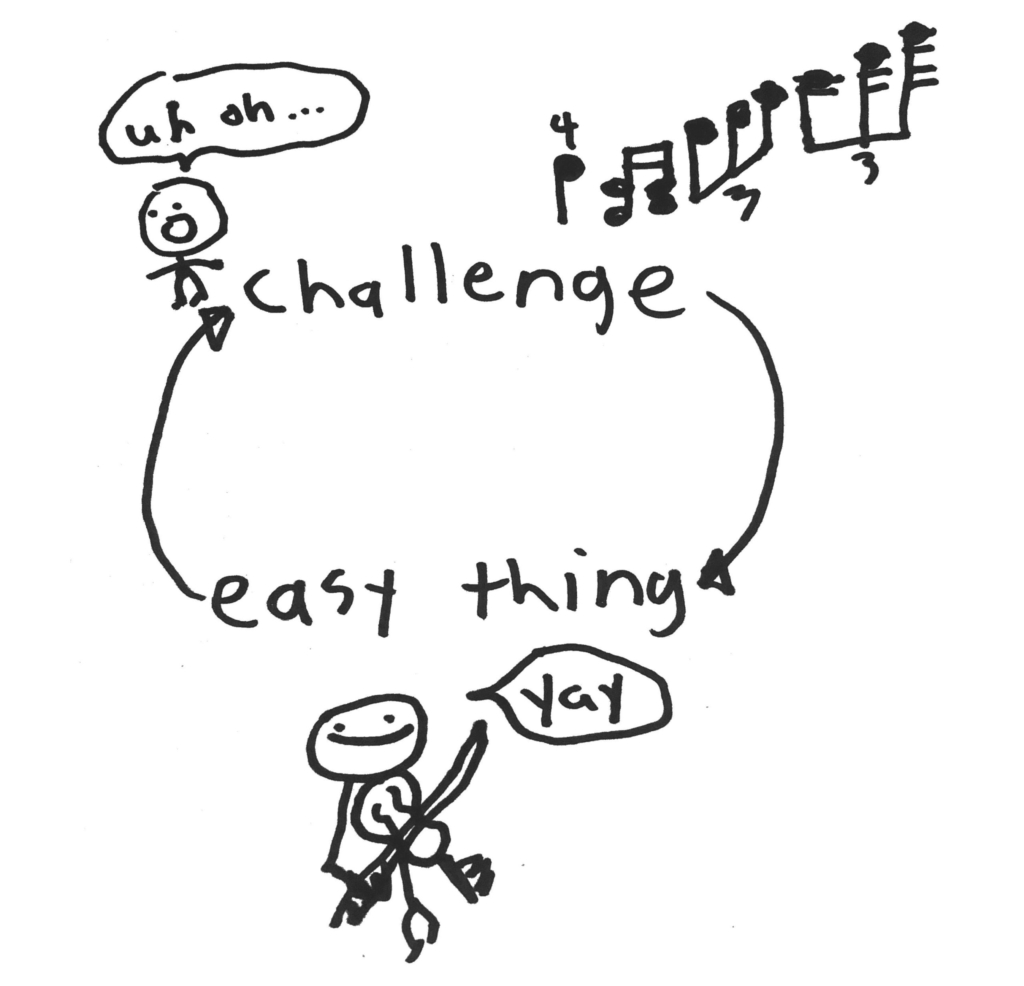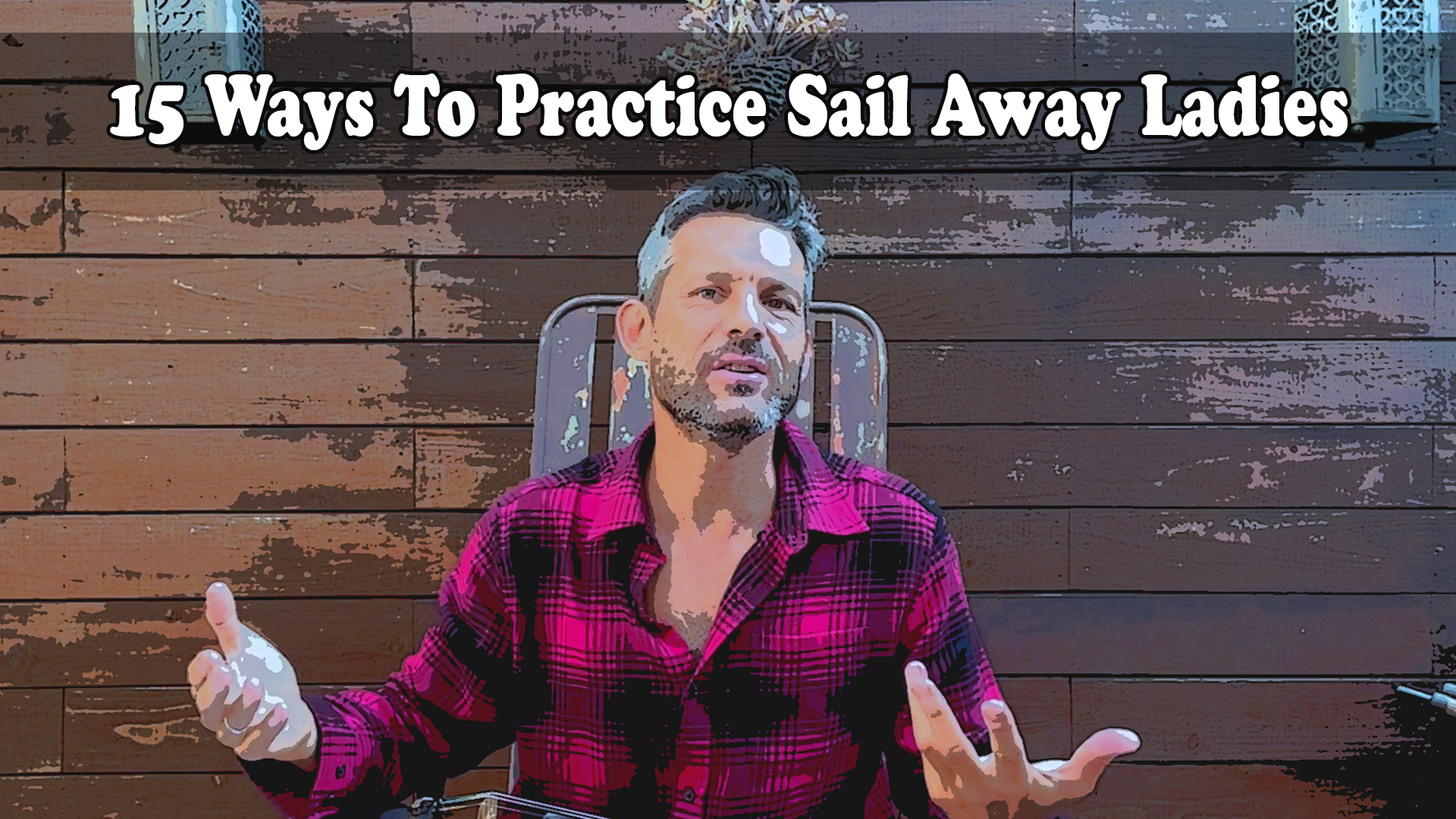In this lesson, I demonstrate fifteen ways to practice the tune Sail Away Ladies. You’ll learn the tune more deeply as you improve various aspects of your technique. What I really want you to learn is how to practice well. Take a journey with each session. Learn more about that here: A Travel Guide For Your Practice Journey.
I just added a lesson on the basic version of this tune with video, sheet music, tabs, and audio here: Sail Away Ladies.
If you haven’t already learned this tune, then apply these ideas to a tune you’ve recently learned. If you’re in the process of learning this tune, I recommend you learn and memorize it before trying these ideas out.
Finally, a lot of the variations in this lesson are based on a new idea I’m developing called Practice Loops. In a nutshell, alternate between something easy and something more challenging.
Are you ready to begin your fiddle journey? I’ll send you some free lessons tailored to your current skill level.
Click here to become a FiddleHed!
Drone practice
As usual, I recommend using drones to make your practice fun and productive.
For variations 1-5, 7, 9-15 use a G drone:
For variation 5 use a C drone:
For variation 8 use an A drone:
Beginner practice variations
1. Alternate between a tune and its scale
If you make a habit of this, you’ll start to hear music in the scales. In the same way, you’ll start to hear scales in the tunes.
- This will help you to learn tunes more quickly.
- It will also help with improvisation.
- And it just makes practicing more interesting.
Here’s a more in-depth lesson on this: Alternate between a tune and its scale
Make scale practice interesting by adding variation:
- Rhythmic variation: tucka, hoedown, triplets, swing doubles, etc.
- Slur patterns: Slur 2, Slur two-separate-two, Georgia shuffle, etc.
- Melodic variation
- Advanced variation: double stops, slides, Irish embellishment
2. Alternate between listening and playing
Here’s a play along track for the first bar of the A part
A1-1-D3-A0-D3-A1-D3
Listen to it once, then play it. Continue to alternate in this way. This is Practice Loop trains you to actively listen to music. During the listening phase, you give the body a chance to reset.

3. Alternate between fiddling and singing
Use the same play along track from above, only this time play it, then sing it. Singing what you play will help you:
- Remember tunes
- Play better in tune
- Visualize music (good for improvisation and adding variation)
Learn more here: Singing and Playing Practice
4. Interval practice
Practice the difficult intervals from the tune, like D3-A1:
Some other intervals to practice in this tune:
- A0-D3
- EL2-A3
- A3-1
Find more interval play along tracks here: Interval Central
5. Transpose to C Major
Same exact fingering as the G Major version, but start on D string instead of A string:
D1-1-G3-D0-G3-D1-G3-D0-1-0-1
Learn more:
6. Fingerprinting
I made up this simple process to help students remember tunes and titles. After practicing a tune:
- Say the title and scale
- Play the first few notes of each part
- At the end of a session, do the fingerprints for all tunes you played that day
This is a quick way to embed the essential info about a tune in your brain 🧠. At the end of this lesson I’ll remind you to play the fingerprint again. 🎗
Learn more here: How to remember lots of fiddle tunes
7. Dronopoly game
Practice other tunes and scales that use a G Root like:
Alternate between the tune you’re currently practicing, and other tunes. This is the process of Interleaving. It’s also a fun way to creatively review things you’ve learned.
Learn more:
Intermediate practice variations
8. Transpose to A Major
This requires a different fingering, so it will take more mental work to transpose it. Use an A drone to practice the A Major scale. This aligns your ears, mind and fingers to the new key:
A0-1-2-3-E0-1-2-3
Then, master the first two bars in A Major: A2-2-0-1-0-2-0-1-2-1-2
Since A is whole step above G, we raised each note by a whole step to transpose to A.
If you get lost, just return to the original version in G Major. Let that be a guide for figuring out the tune in A Major.
Eventually you can transpose tunes to all 12 keys of Western harmony. Learn more here: Joy To The World of Transposition!
9. Add droning double stops
Add open string double stops to melody notes. For this song, drone the string to the left of the melody. Learn more:
10. Add two-finger chordal double stops
This is more challenging. For the first bar we play:
D3A1-1-D3-A0-D3-A1-D3
You could also add more double stops to the same part:
D3A1-D31-D3-D3A0-D3-D3A1-D3
Learn more:
11. Strum the chord, sing the melody
You can turn your fiddle into a mandolin. Start by just strumming a G Major chord:
[G0 D0 A1 EL2]
Play simple rhythm and try to sing the melody. Eventually you can learn other mandolin chords and play the entire tune this way. This trains you to play on songs. Stay tuned for more lessons on this in 2021!
Advanced practice variations
12. StruMelody™
Pluck the melody with your thumb. Then try adding open D and G strings. Try to keep the melody distinct as you add chord notes.
13. Bluesy
Add chromatic notes and slides to the melody. Learn more:
14. Converting a major key tune to a minor key
This is the weirdest thing on the list. Sub out the 3rd, 6th and 7th steps of G Major with G Aeolian:
G0-1-L2-3-D0-L1-L2-3 | D3-A0-L1-L2-3-L4-EL1-L2
Lesson on this process is in the works for 2021…
15. Old-timey Irish!
Jigify the tune. There’s not a simple formula for this. To get a feel for the process, practice adding triplets and melodic variation to scales. Do that A LOT.
Learn more:
- Melodic Scale Variation I
- Melodic Scale Variation Exercises II
- Twinkle, Twinkle, Little Star – Melodic Variation
- Mary Had A Little Lamb – Melodic Variation
PS: Don’t forget to play fingerprint for the tune again (number 6 on the list).
PPS: If you liked this, check out 17 Ways To Practice Jenny Lynn.
PPPS: Music practice should be fun.
Are you ready to begin your fiddle journey? I’ll send you some free lessons tailored to your current skill level.
Click here to become a FiddleHed!


Jason,
I’m not sure about focusing my practice, but you do present ideas for ways to practice a song to learn it and some variations. I especially loved the chordal and bluesy variations.
Thanks, Cindy
Thanks Jason, I had started to practice with changing the key, changing between scale and piece and other piece, something easy some thing difficult. It has made practice more interesting, can’t wait to play whenever I can. I will incorporate all of these ways into my practices from tomorrow, attempt some of the more difficult things, will start to keep a practice journal also and see what happens. Excellent tools! Thank you!
Nice lessons! Great info! Thanks!
Thanks Russ. Let me know how it goes with your practice journey…
Great material, my practice time has become more focused.
Good to hear that. I sometimes worry that these “15 ways to play a tune” lessons make people less focused…